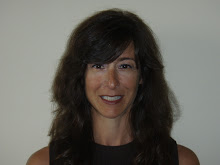On friday I attended a fascinating public relations conference on what's next for social media and social networking. The day consisted of panels, presentations and discussions on the trends and innovations that are re-shaping public relations and the communications industry. Speakers included Ray Jordan, Corporate Vice President Public Affairs and Communications, Johnson & Johnson, www.jnj.com, Michael Bass, Senior Vice President, National Basketball Association,nba.com, Ray Kerins, Vice President External Affiars, Pfizer Inc. pfizer.com, Bryson Thornton, Senior Manager Marketing Communications, Del Monte Foods, delmonte.com, Josh Stoffregen, Manager Global Communications, Prudential Fianancial, Susan Getgood, author of Professional Blogging for Dummies and co-founder of Blog with Integrity, Jacalyn Lee, Public Relations Director, The Knot Inc. theknot.com
Interestingly, the take away for the day was that although companies are actively engaging in social media, social media has not profoundly changed the public relations profession. The public relations profession has always been about relationships and that has fundamentally stayed the same. The only thing that has changed says Bryson Thornton from Del Monte is that the vehicles that we communicate with have changed. "Today we need to be quicker and more nimble and we need to focus on providing interesting content," says Thornton, "Naturally, we need to include social media into our communication mix, but it has not changed the fundamental core of public relations."
While social media may not have changed the whole profession, it has certainly provided companies with a wonderful opportunity to engage more directly with customers. Each presenter shared some of the ways they are utilizing social media strategies to connect and learn from their different publics. Whether it's using blogs or web shows or twitter and facebook, it all comes down to content and relationships and understanding how different people want to be communicated with. Building relationships is still at the core of public relations but now in the digital age we need to communicate more frequently and more candidly.
Monday, September 27, 2010
Friday, September 17, 2010
Opening Doors: Developing Diverse Audiences
With the start of Hispanic Heritage Month September 15th, it is a good time to think about how much the country's population is changing and how these changes will impact the practice of public relations. According to the U.S. Census Bureau, the racial minority population of the United States is expected to exceed fifty percent by the year 2050. Today Hispanic's constitute 16% of the nation's population with a count of 48.4 million and an additional 4 million residents of Puerto Rico, making people of Hispanic origin the nation's largest ethnic minority. In order for today's organizations to remain relevant to this changing cultural mosaic, it is important that public relations professionals adapt their programs to ensure that they reflect the cultural interests of everyone.
A most recent example of programming that reflects the interests of a large multi-cultural population, was the opening of an exhibition at El Museo del Barrio, entitled Nueva York(1613-1945) which opened September 16th. This is the first exhibition to explore how New York's long and deep involvement with Spain and Latin America has affected virtually every aspect of the city's development, from commerce, manufacturing and transportation to communications, entertainment and the arts. Check out the review of the exhibition in the New York Times.
Stay tuned for more on developing diverse audiences in my upcoming article in PRSA's Tactics.
A most recent example of programming that reflects the interests of a large multi-cultural population, was the opening of an exhibition at El Museo del Barrio, entitled Nueva York(1613-1945) which opened September 16th. This is the first exhibition to explore how New York's long and deep involvement with Spain and Latin America has affected virtually every aspect of the city's development, from commerce, manufacturing and transportation to communications, entertainment and the arts. Check out the review of the exhibition in the New York Times.
Stay tuned for more on developing diverse audiences in my upcoming article in PRSA's Tactics.
Subscribe to:
Comments (Atom)

